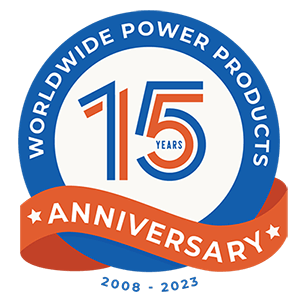When Disaster Strikes and The Lights Go Out: 5 Steps for Calculating the Right Size Rental Generator
There is rarely time to plan for an emergency that leaves your business without power, but that does not mean that you must close the doors. You will need power to get repairs done and recover from a natural disaster. Sizing the right generator for your electrical needs is important and with the help of these simple steps, you will be able to quickly determine the equipment you need to get power again:
Determine the Amount of Electrical Service Your Business Uses: The electrical service for your business is rated by the amount of electricity you consume during a billing cycle. This is rated in kilowatts and will help you determine the size generator you will need to power your business while the power is out. The power bills will also give you an idea of how much electricity is consumed during business operating hours. For small businesses and homes with minimal electrical needs, you can easily use the information from your utility bills to calculate the size rental generator you are going to need.
The Loads That the Generators Need to Carry: Loads from equipment like electrical motors pull a lot of energy from generators. For a commercial business like a local shop or restaurant, the electrical loads may be minimal and a smaller generator that is sized in accordance with your electrical service will usually be fine. It is important to consider extra equipment that may put heavy loads on a generator, such as refrigeration systems or equipment in industrial environments; in these instances, you are going to need a larger generator that can handle the loads of this equipment. Commercial businesses that have refrigerated storage areas will usually need a larger generator to handle loads.
Calculating for Single or Three-Phase Electrical Loads on Generator: Different types of electrical motors used in industries like manufacturing require a three-phase electrical service. Whether it you have single-phase or three-phase electrical loads, you will want to use the correct formula to calculate the electrical needs for equipment. The three-phase formula for calculating electricity service is as follows; Volts X Amps X 1.73 X 0.8pf = kW. Use the kW number to determine the side generator that is needed. Usually the electrical service provided to your business by the electrical service is single-phase. To calculate single-phase consumption, use this formula; (Volts X Amps)/1000 = kW.
Considering the Generator to Be Used as A Primary Power Source and Constant Loads: Primary power source means that you will be using the generator for the main electrical service for your business, which is what you will usually need in the case of a natural disaster. There are also standby generators, which switch from the grid when the power goes out. If you expect to have service returned to your business soon, a standby generator will help ensure that there are no power interruptions while repairs are being done.
Is Noise Going to Be an Issue for Your Business or Do You Have Special Noise Reduction Requirements: For some businesses, decibel levels of noise coming from the generator is not an issue. In some cases, you may need to have your rental generator especially fitted with noise reduction systems. The noise reduction systems include quitter motors, muffler and insulated noise barriers to make generators as quiet as possible.
When the lights go out in your town, a rental generator will help you to get back in business quickly. Once you have calculated the equipment you need, contact us to get the generator you need and return power to your business as soon as possible.











